Check out the wave action video toward the bottom of the page!
Want to increase your chances for catching the thrilling wave action on the coast? Here's some tips:
- Look for beaches with relatively shallow rock formations that jut out into the ocean, along with viewpoints or trails that are off to one side. High cliffs will certainly work, if you can see them from the side. In some cases you can watch the waves standing behind the cliff - a safe distance back.
- The best time is almost always high tide, preferably starting about an hour before. This puts the wave impact near the
top of the rocks. Going an hour or two before puts you there when the incoming tide will help reinforce the waves.
Also, there might be limited parking at some really active areas!
NOTE: The tides during the full moon and the "empty moon" phases are higher than normal, and will serve to reinforce the waves. In the case of shallow rock formations, sometimes the tide will be a bit too high, and may result in too little rock surface area being presented for the waves to crash against. During these times, plan to arrive several hours prior to high tide. - Monitor the weather bureau for things like "Small Craft Advisory" alerts, "Long Period Swell" alerts, or any time the seas are 7 - 8 feet or more. Long period swells are the best, especially when combined with high wave heights. "Long period" means 12 - 15 seconds or more between each wave. The long time between waves allows more water to build up behind each wave, and it gives channels and fissures time to drain between waves. An example marine announcement is "West swell, 14 ft at 17-20 seconds".
- One weather scenario during the summer is when there is high pressure over the general area and a "thermal low" over Northern California or Southern Oregon. This can result in some relatively high winds and decent wave action, even if the seas are "just" 5 - 7 feet.
- When the seas reach 10 feet or more, a great deal of sea foam is generated. Crevises in the rocks will often fill up with this foam - pictures 4 and 5 below show some of this.
- Waves tend to come in, well, waves. That is, There will be periods of relative calm followed by periods of
intense action. There are two components to ocean waves: "wind waves" and "swells". When the wind waves coincide
with the high point of a swell, the action is at its peak. You can tell when this is happening because there is usually more
noise. When the incoming waves start to break over with the sound of a rifle shot, and things start to get LOUD,
have your camera ready!
NOTE: These are also the times to BE CAREFUL! Some beaches have rock formations shallow enough that you can walk out on them. Many of the rock formations are lava-based and are really rugged. Also, LOOK at the area you are standing on. If it is wet, this likely means the bigger waves are covering the area. Look for dry areas to stand on. If there are "rogue wave" warnings, you know the Standing Rule of The Pacific: "Don't turn your back to the ocean!". - If you plan to take photographs, the best situation is high seas during relatively clear days. Stormy and rainy days can bring big waves but photographs turn out rather grey and washed out.
Some photos showing the Pacific at its most inspiring
Waves colliding prior to impact |
|
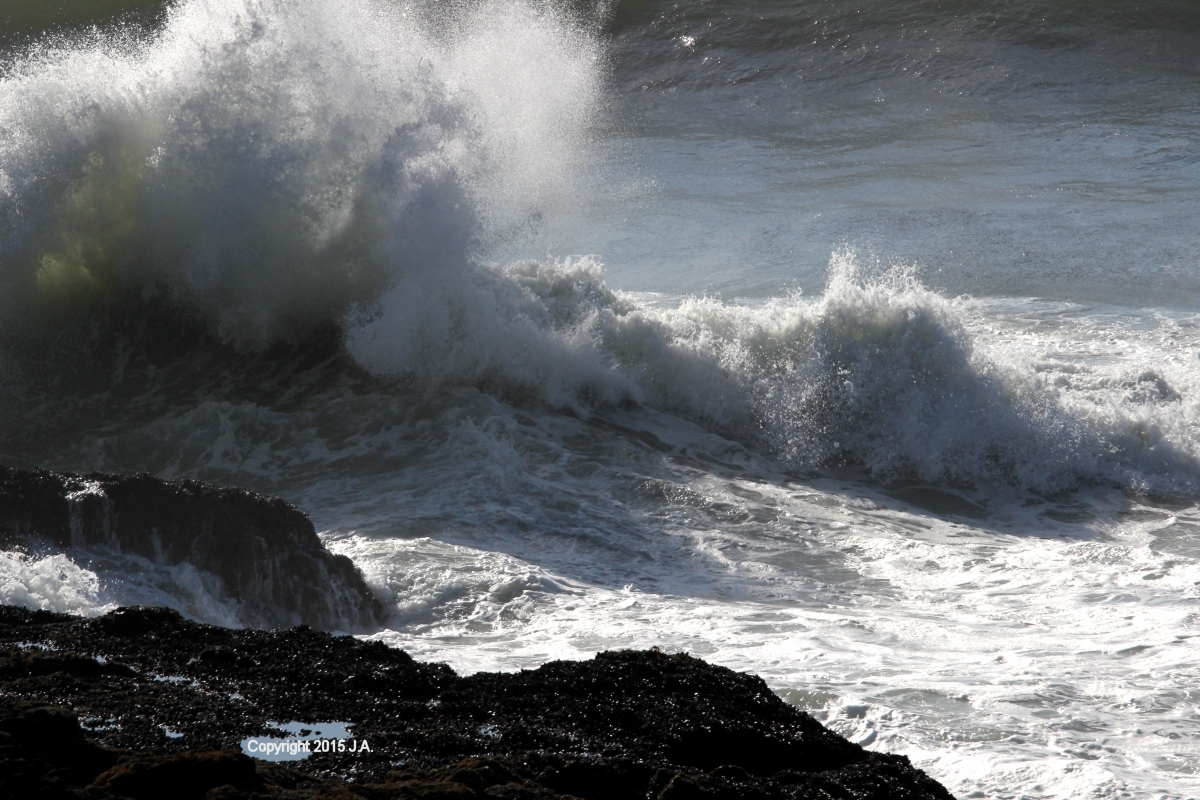 |
|
|
A plume of green water |
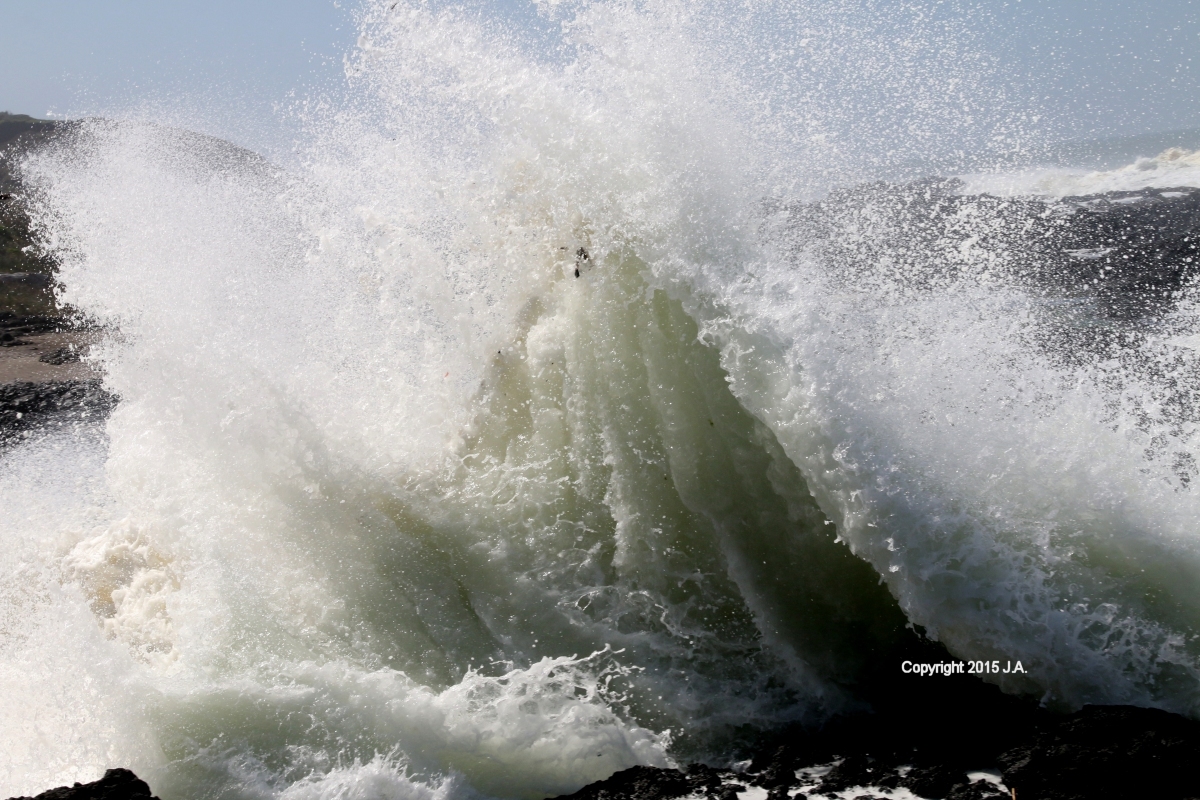 |
Another powerful impact |
|
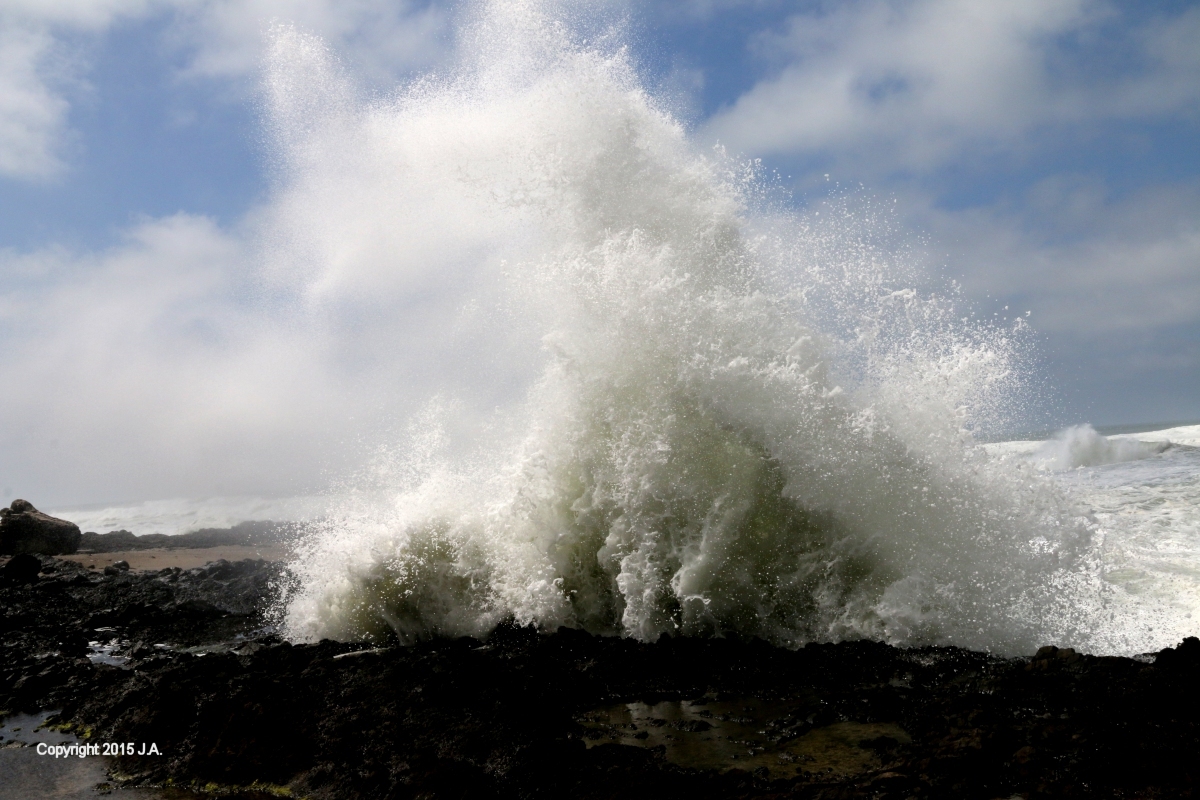 |
|
|
A cliff-high spray of bright water |
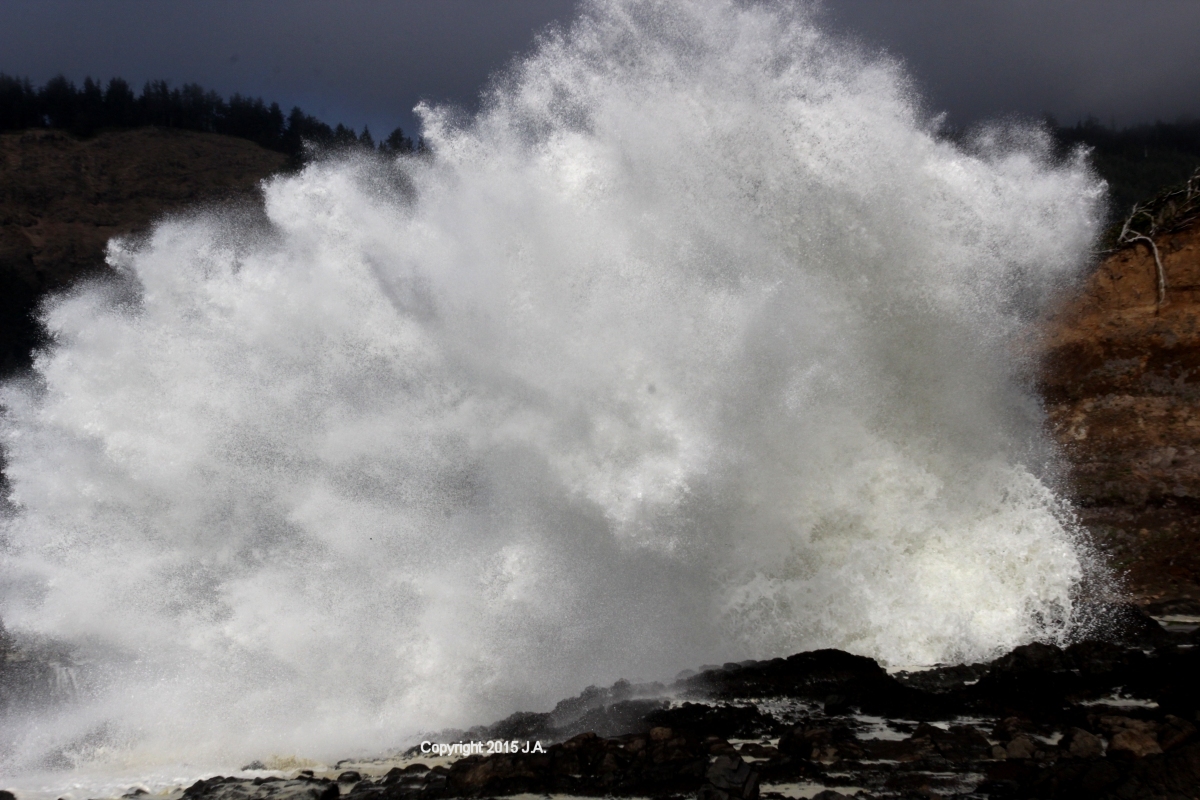 |
Sea foam splattered |
|
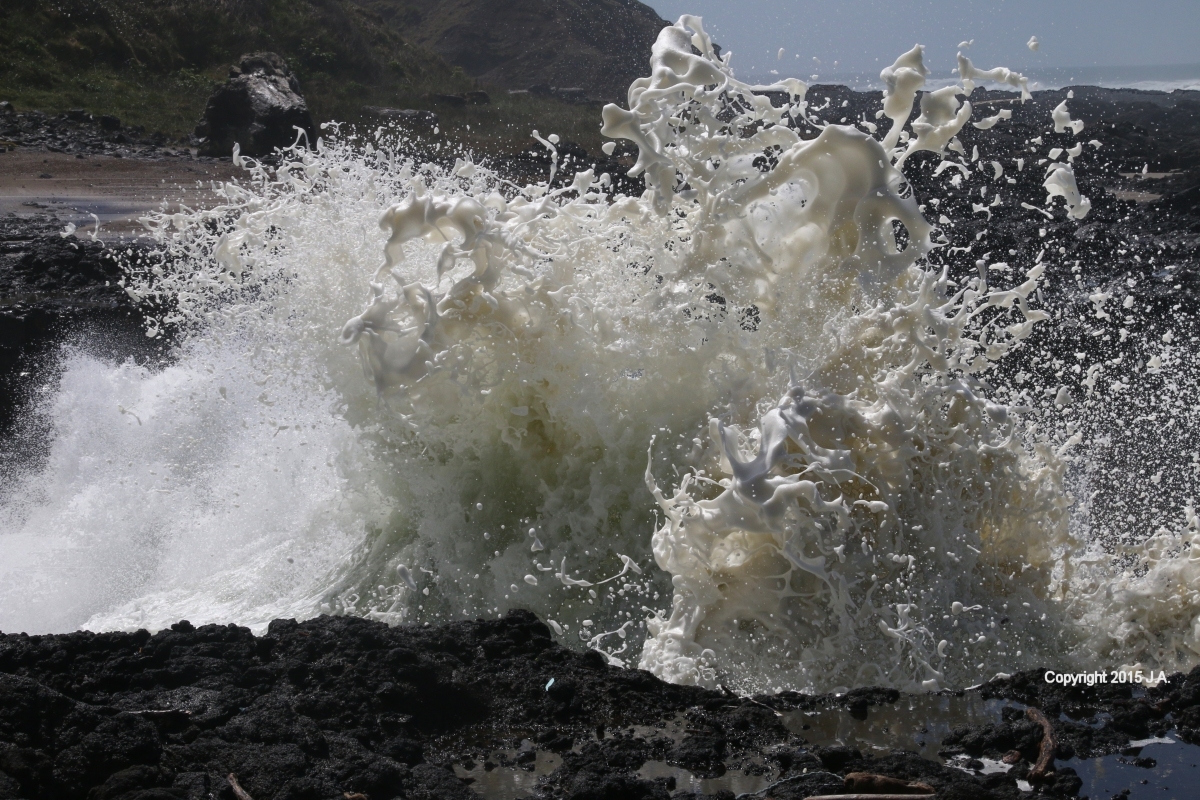 |
|
|
Vanilla milk shake anyone? |
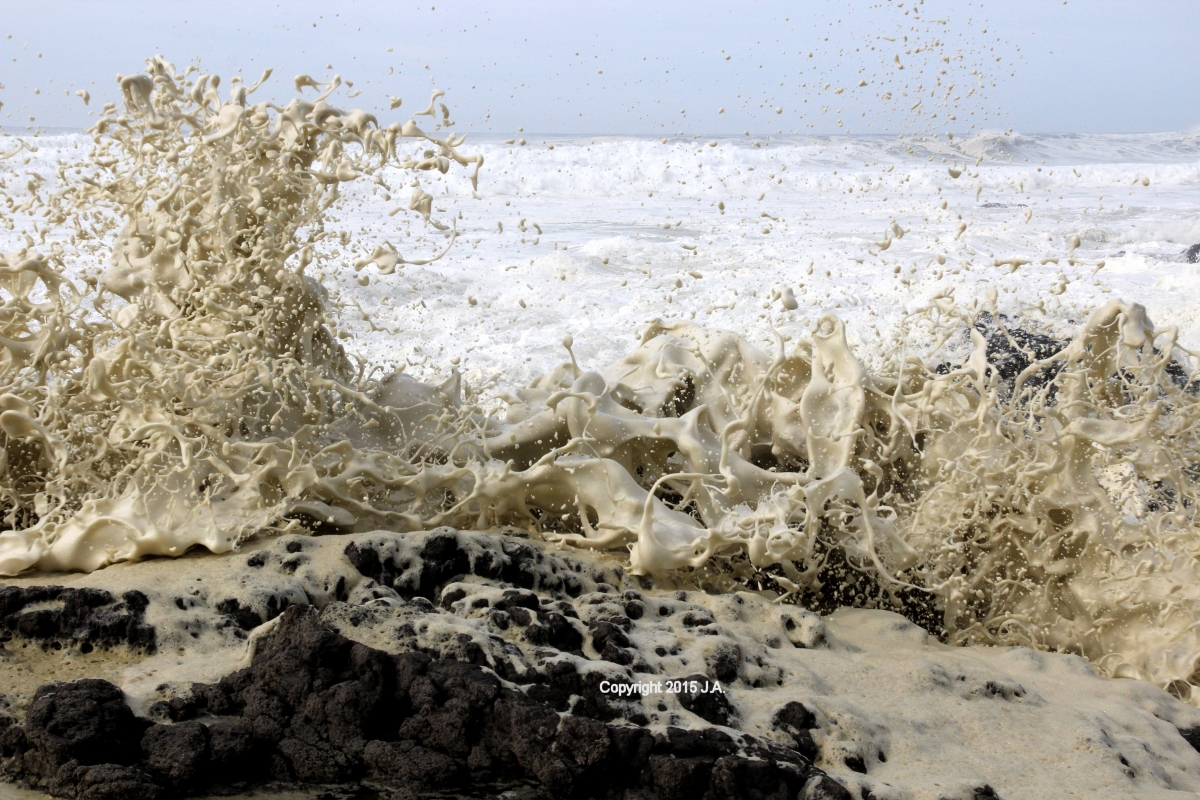 |
More chaotic sea foam |
|
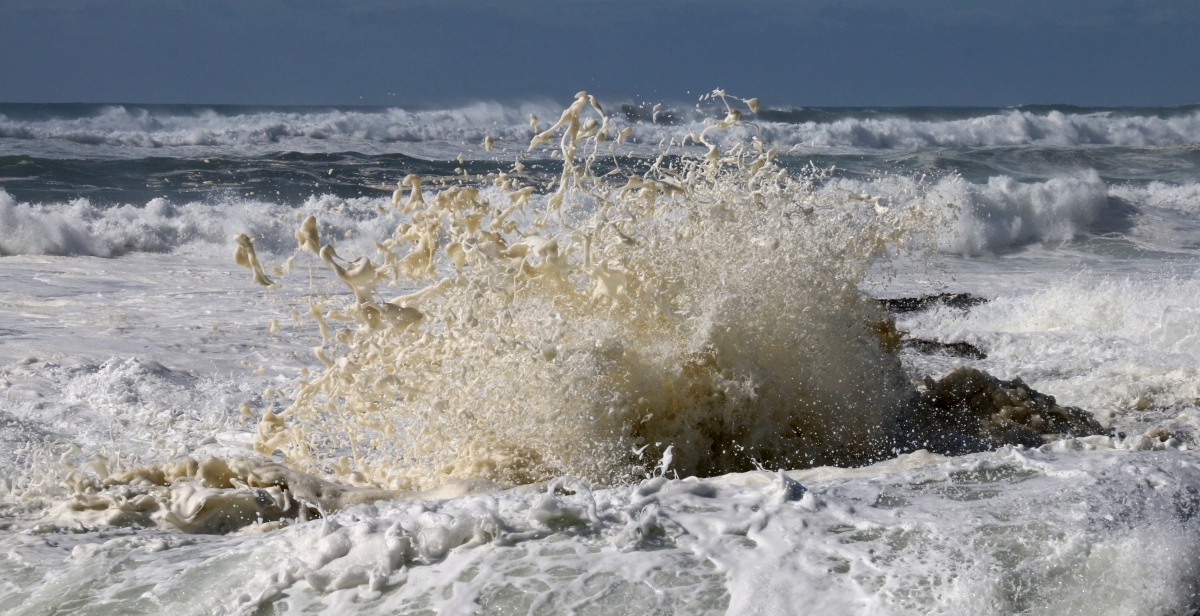 |
|
|
A cobalt sky, a cocoa-brown rock, and a cotton-ball wave |
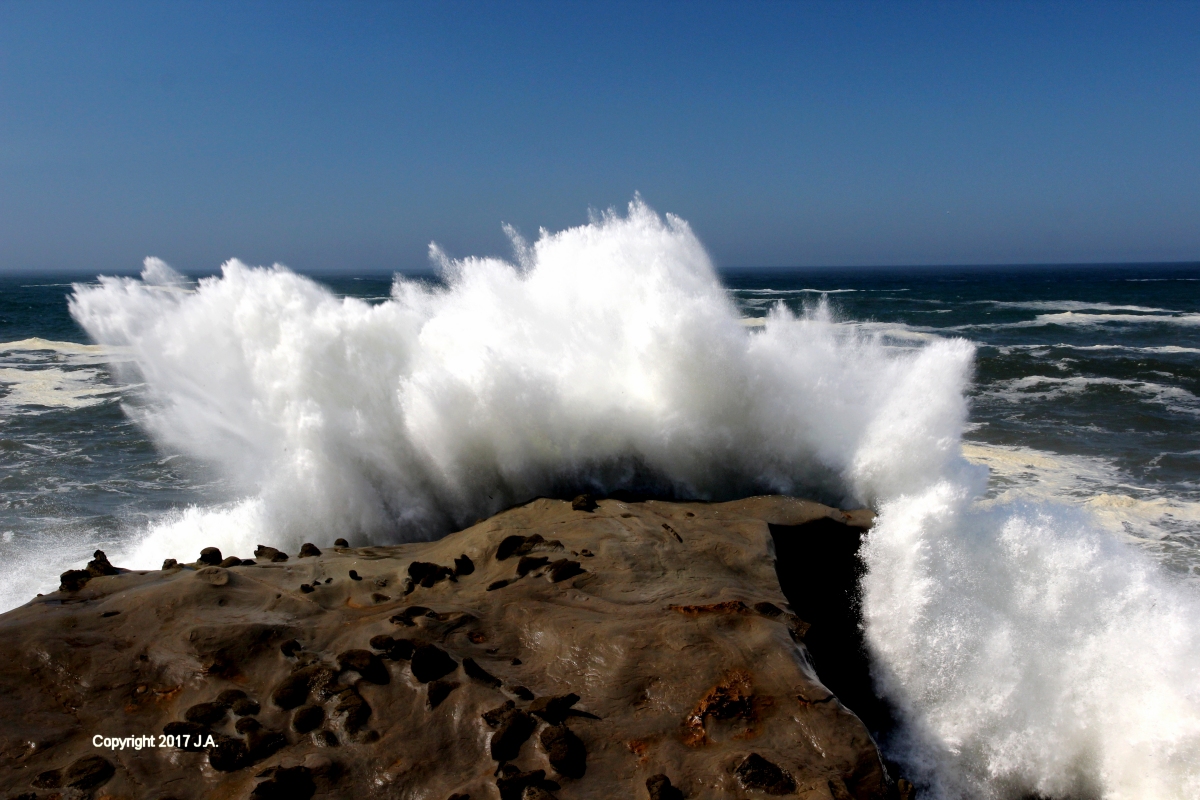 |
Here's a sequence leading up to a big splash.
I'm on the business end of a long crevice in the rocks (safely perched up on a mound!) The first four pictures
show a wave riding on one of the "long period swells". It enters the crevice and barrels its way toward me, topped
with boiling sea foam. The next two show the impact when it it hits the rocky wall.
The wave approaches the opening in the distance |
It smashes against the outer rocks |
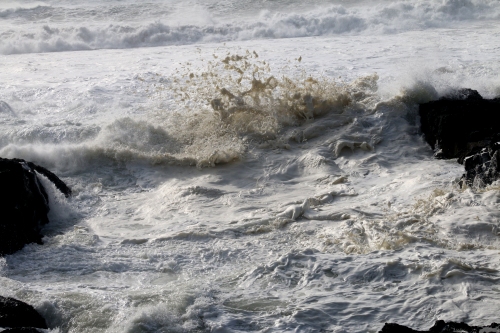 |
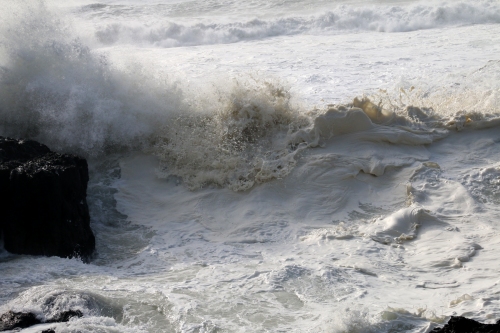 |
On its way down the tube |
Gaining strength just before impact |
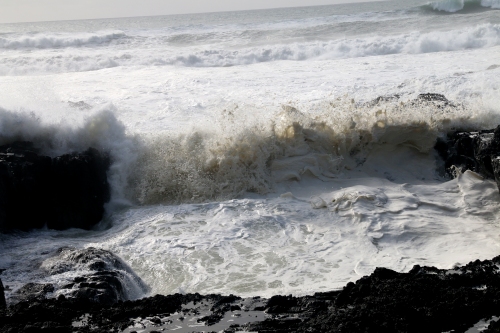 |
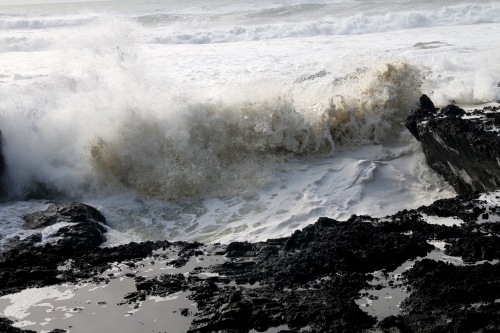 |
And we have impact: Mr WAVE meets Mr ROCK!! |
|
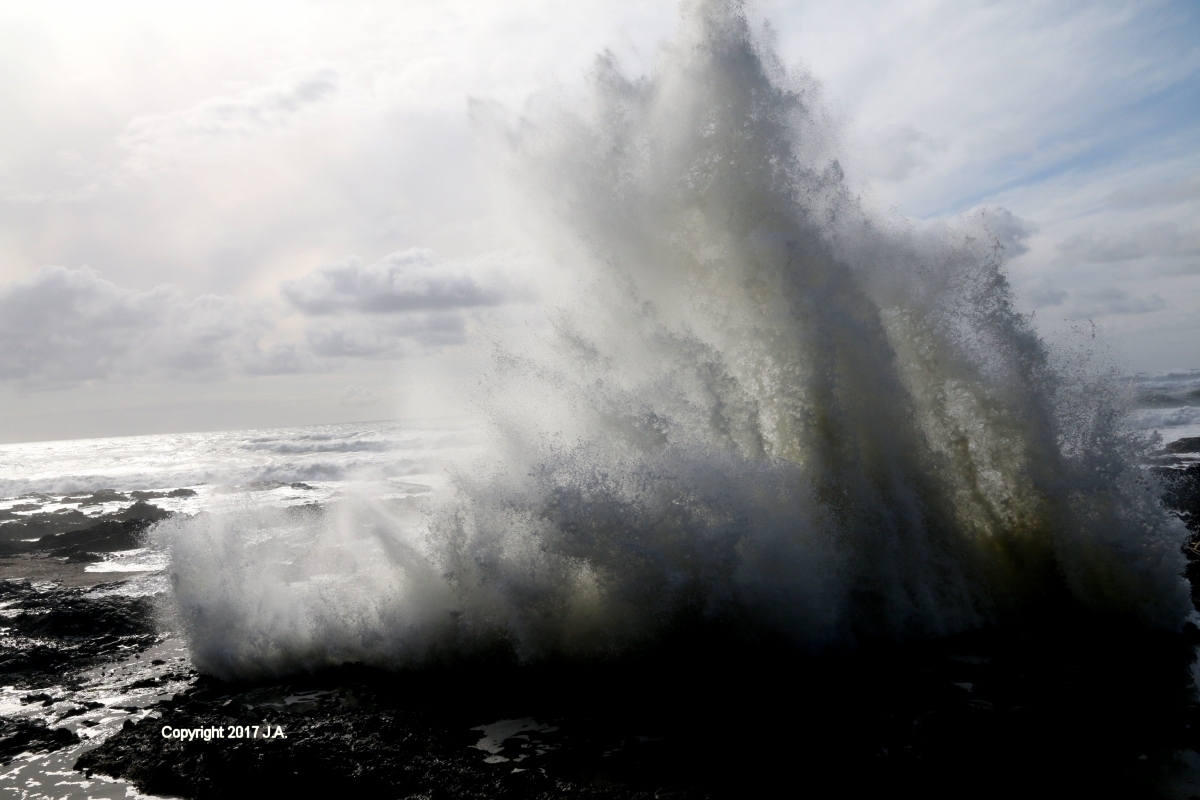 |
|
|
A second later |
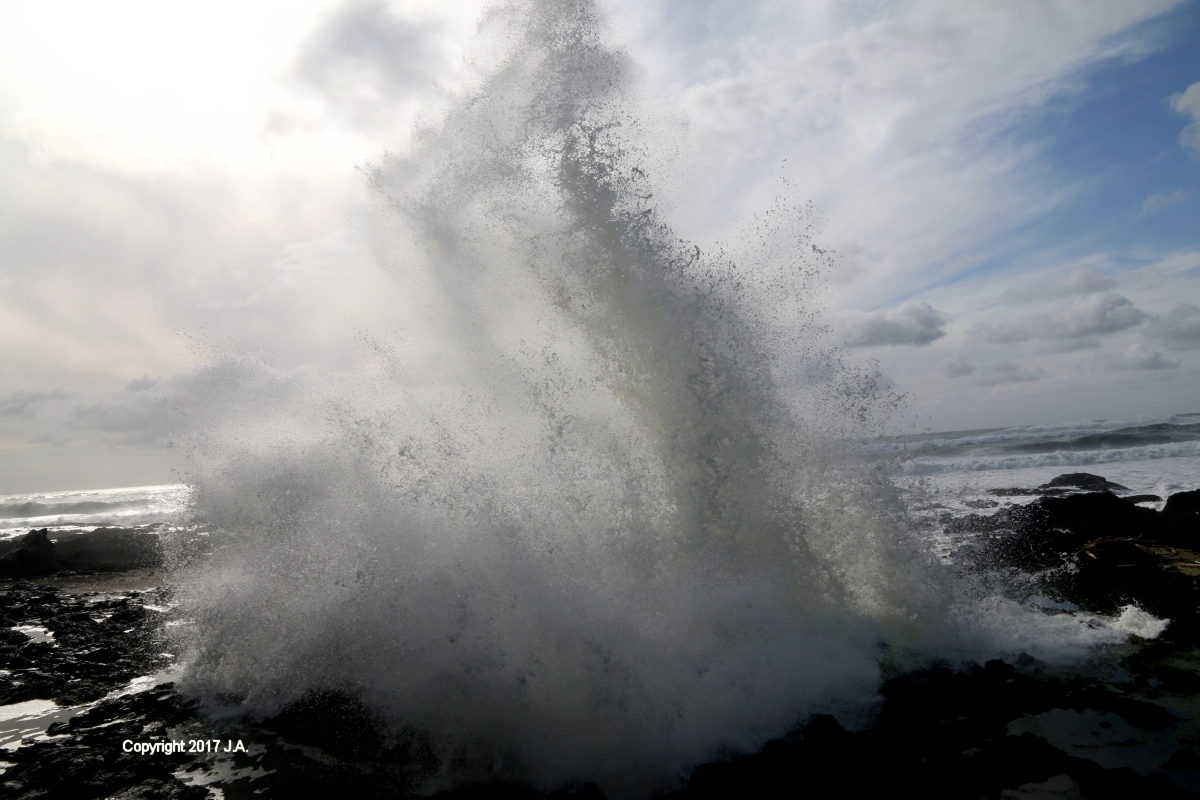 |
Want to see some Pacific wave crash action? Well, here's a video of some, taken during a recent visit in January, 2019.
It was a cloudy day, so the waves aren't as bright as the pictures above.
NOTE: This is best viewed on a computer or laptop with decent speakers, and with the bass cranked up a bit!
In the previous paragraphs, we discussed standing only on dry areas. If the area is wet, that means the waves will reach you sooner or later. That's what happened to the guy in the next pictures. The one who likely said to his girlfriend "How about a picture of me next to the next big one!"
Hey babe, Get my picture! |
Oops. This doesn't look too good. |
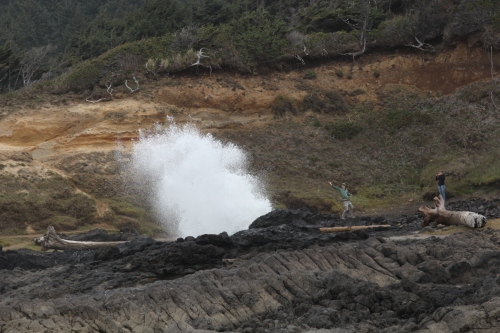 |
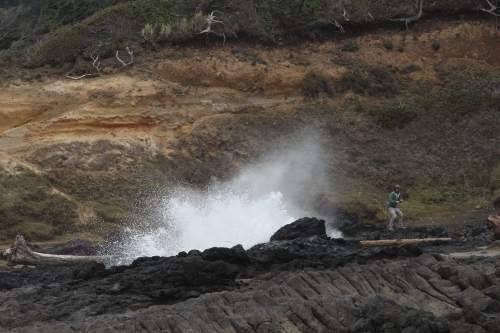 |
Bam-m-m-m-m! |
Soaked survivor |
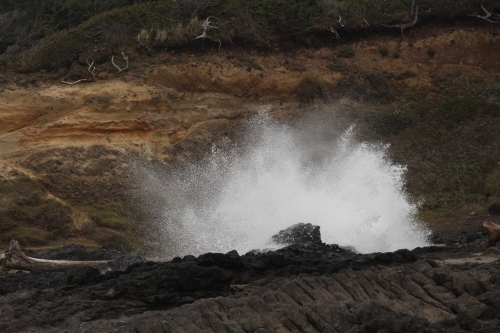 |
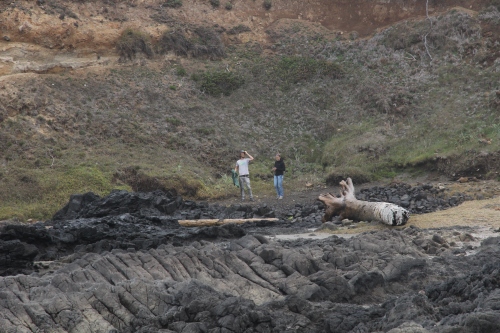 |
Copyright © 2023 J.A.